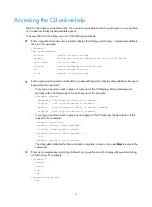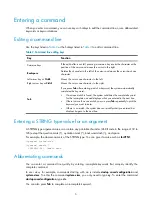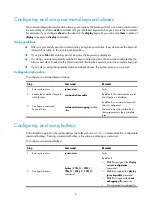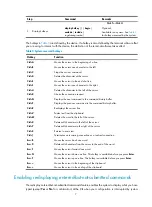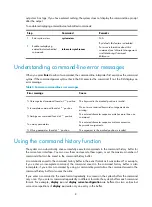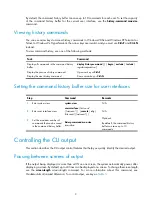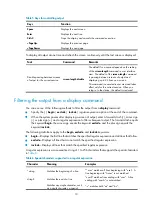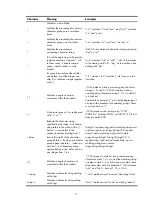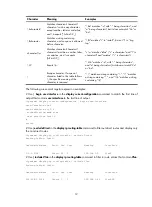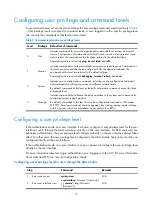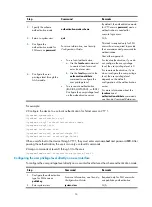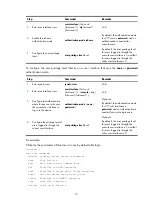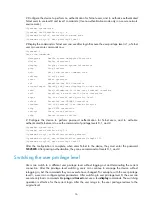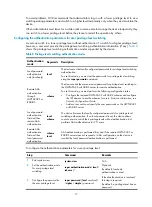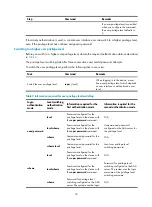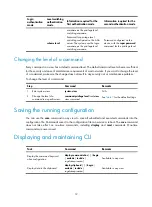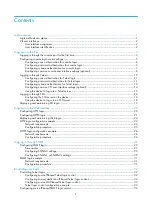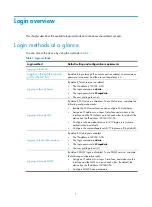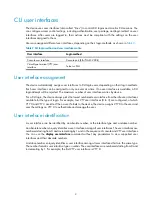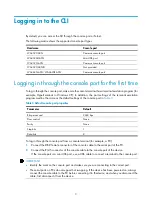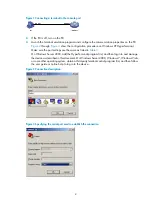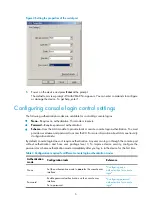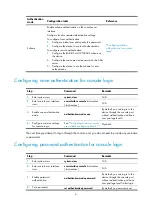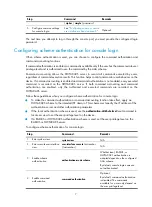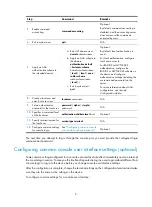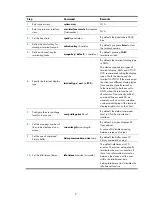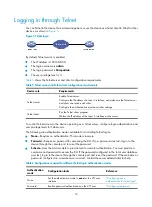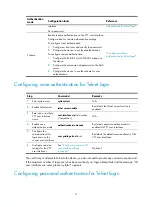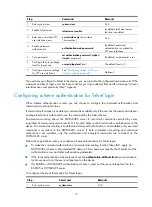
18
Step Command
Remarks
If no user privilege level is specified
when you configure the command,
the user privilege level defaults to
3.
If local-only authentication is used, a console user interface user can switch to a higher privilege level,
even if the privilege level has not been assigned a password.
Switching to a higher user privilege level
Before you switch to a higher user privilege level, obtain the required authentication data as described
The privilege level switching fails after three consecutive unsuccessful password attempts.
To switch the user privilege level, perform the following task in user view:
Task Command
Remarks
Switch the user privilege level.
super
[
level
]
When logging in to the device, a user
has a user privilege level, which depends
on user interface or authentication user
level.
Table 9
Information required for user privilege level switching
Login
authentication
mode
Level switching
authentication
mode
Information required for the
first authentication mode
Information required for the
second authentication mode
none/password
local
Password configured for the
privilege level on the device with
the
super password
command.
N/A
local
scheme
Password configured for the
privilege level on the device with
the
super password
command.
Username and password
configured on the AAA server for
the privilege level.
scheme
Username and password for the
privilege level.
N/A
scheme
local
Username and password for the
privilege level.
Local user privilege level
switching password.
scheme
local
Password configured for the
privilege level on the device with
the
super password
command.
N/A
local
scheme
Password configured for the
privilege level on the device with
the
super password
command.
Password for privilege level
switching configured on the AAA
server. The system uses the login
username as the privilege level
switching username.
scheme
Password for privilege level
switching configured on the AAA
server. The system uses the login
N/A

